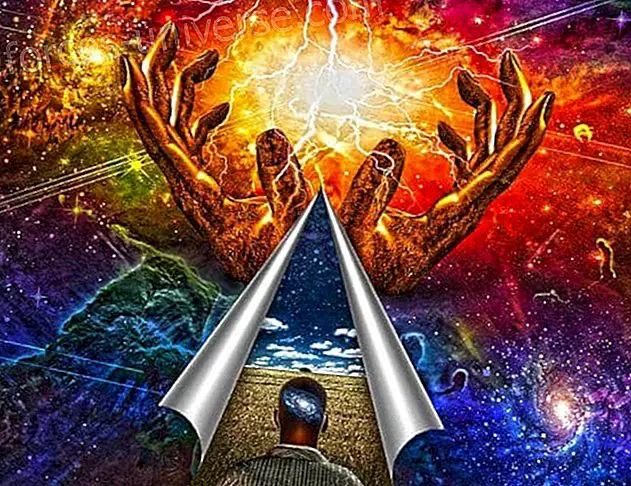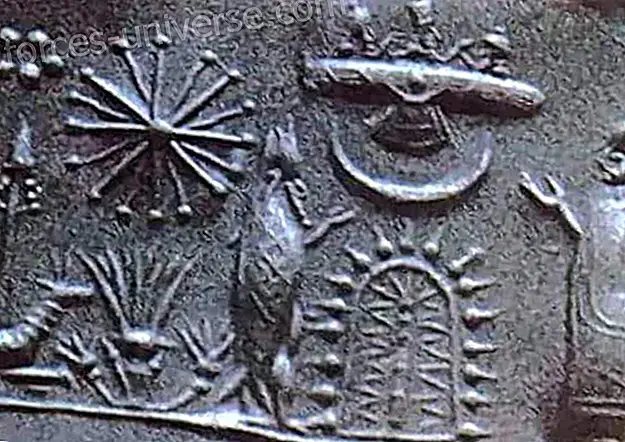
As the family is the cell of society, it becomes the core of the culture, since it is in the family where we acquire our beliefs and convictions, thanks to spiritual parents. Values and virtues intermingle with religious beliefs, forming a highly complex value order scheme. Religion is intimately linked to the value system of individuals and they determine each other. Existential beliefs, such as faith in God or another natural order of the universe, are general beliefs that help people retain hope and seek the meaning of life, despite their painful experiences. The positive (protective) effects on the physical and mental health of religious beliefs and spirituality have been considered by anthropology and psychology, however, religion and spirituality can also influence the mental health of some subjects. Hence the importance of making a distinction between the terms "religion" and "spirituality."
Religion could be defined as an organized system of beliefs and practices executed by parishioners, and spirituality as a personal principle of life that encourages qualitative transcending relationships with God. Religiosity includes beliefs and practices characterized by a particular tradition, and spirituality the human condition of transcending and connecting to a superior being, God or the sacred to discover for himself the meaning of life. Religion seems to be associated with the formal (organizational) and spirituality in terms of approach and connection with God.
Religion is objective / institutional and spirituality is subjective / personal.
Religion is substantive and spirituality is procedural.
Religion is static and dynamic spirituality.
Religion is more negative (receptive) and spirituality more positive (proactive).
However, in each religion to a mystical aspect that is transmitted only to the initiated in the mysteries, the ministers, the priests.
Two currents can be traced in Christianity, whose origins were the faded mysteries, the mystical instruction stream emanating from the wisdom communicated in the Mysteries, and the mystical contemplation current that led to ecstasy and spiritual vision.
The rite is the technique used to sanctify the custom, the rite creates and perpetuates myths while contributing to the preservation of social and religious customs.
Mysticism, as a technique to cultivate the awareness of the presence of God, is generally worthy of praise, but when such practices lead to social isolation and culminate in religious fanaticism, they are reprehensible.
The practical test of all the religious experiences of mysticism, ecstasy and inspiration consists in observing whether these phenomena make an individual:
- Enjoy better and more complete physical health.
- Run more effectively and practically in your mental life.
- Socialize more fully and happily in your religious experience.
- Spiritualize your daily life more completely while faithfully discharging the common duties of routine mortal existence.
- Increase your love and appreciation of truth, beauty and goodness.
- Keep the social, moral, ethical and spiritual values recognized in your time.
- Increase your spiritual understanding, your awareness of God.
THE SACRAMENTS
The Seven Sacraments of Christianity cover the entire life, from the Welcome of Baptism to the farewell of the Extreme Unction.
The Sacrament can be defined as the internal and visible signal of the granting of an internal and spiritual grace, instituted by some ministers, so that through their means we obtain that, and at the same time we are pledged to have received it.
The plan adopted by Christ regarding this religion is to allocate for its use a special compartment of the vast deposit of spiritual energy; and that a certain order of ministers, through marked ceremonies, words and signs of power, are enabled to extract energy for the benefit of humanity. The system chosen for the transmission of this power is the sacrament of Order. It is the priests who administer sanctifying grace.
A sacrament is not a magical panacea. It cannot alter the disposition of a man, but it can help him to easily drive his vehicles. He will not suddenly transmute a demon in angel or a saint to an evil one, but surely he offers man a favorable opportunity. This is precisely the object of Baptism and the limit of its effectiveness.
1. Baptism
Baptism is a sacrament by which whoever receives it is solemnly admitted to the communion of the Holy Church of Christ and grafted into His mystical Body .
The administration of this Sacrament begins with the invocation accustomed to all our services; to show that all our work is done in the Name and by the power of the always blessed and Holy Trinity. Then the godfather presents the creature to the priest, begging him to admit it to the Church's guild, and the priest agrees to the plea, and addresses the congregation.
Each soul brings with it its peculiar qualities, some good, others not so much and some specifically bad as their past lives would have been.
Obviously, the duty of the parents or guardians with respect to the child is to do everything in their power to cultivate the good germs and to repress or eliminate the bad ones by depriving them of any stimulus. The internal life researcher will understand that the education of qualities depends mostly on the environment surrounding the child. If you are surrounded by love and nobility, you will wake up and the love and nobility that is in him will be brought up. If, on the contrary, it is surrounded by vibrations of anger and irascibility, it will wake up and sprout the germs that are in it, as surely there will be however few and weak they may be. This will result in a huge difference in their behavior according to the series of vibrations that are first put into action. The sacrament of Baptism is especially intended for this purpose. The water used is magnetized with the particular object that its vibrations influence the higher vehicles, so that all the germs of the good qualities existing in the astral and mental bodies reports of the child Or receive powerful stimulus while the bad germs are isolated. The capital idea is to take advantage of this early opportunity to favor the development of good germs so that it precedes that of the bad ones so that when they subsequently bear fruit, the good ones are already sufficiently educated to dominate with relative ease the bad guys.
This is an aspect of the baptismal ceremony. It also has the symbol of the initiation to which it is hoped that the new member of the Church will direct his steps as a man.
Baptism is the consecration and dedication of the new group of vehicles to the faithful expression of the soul and the service of the Great White Brotherhood. However, there is also a hidden aspect in Baptism related to new vehicles; and if the ceremony is carried out properly and intelligently, there is no doubt that its effectiveness will be very powerful. Therefore this Sacrament can be considered as an operation of white magic with concrete influential results in the future behavior of the child, and in every act of magic there is an energy that will materialize.
2. Penance
Children under seven are not required to confess, because it is the tradition of the Church that they are not capable of serious and responsible sin. From the age of seven until they have full responsibility, the liberal Catholic Church admits them to the auricular confession with the prior consent of the father or mother, except in cases of urgent need.
The priest will hear the confession only once, unless he is forced to interrupt it. Then he will give as many tips as his good judgment suggests. According to the custom of the liberal Catholic Church, the priest does not impose penance; but he can insinuate the confessor who attends the Holy Eucharist, so that the energy he receives then can use it against some special fault or set of faults.
3. Communion
Of the various aids that Christ has provided to His faithful, undoubtedly the greatest is the sacrament of the Eucharist, commonly called Mass, the most beautiful, admirable and uplifting Christian ceremony. It not only benefits the individual, like the other sacraments, but the entire congregation. It is not administered only once, such as baptism or confirmation, but it helps the faithful throughout their lives, and also influences the neighborhood of the church in which it is celebrated. That is why it would be that John Paul II described it as one of the five luminous mysteries.
Communion with bread and wine, because as it is an important factor in the transmutation of energy, it must be able to transmute it. By participating in both you can more easily effect transmutation, because when entering Bread and Wine into your body you are part of it, and therefore, all your forces are in the physical plane at the disposal of the energy flowing through the duct. of the. If I did not take the Chalice, it would be just an ethereal channel, instead of being also the dense part of the physical plane. The sacred elements10 identify with him, penetrate his organism and enable the energy to dimane from him in a different way and to a greater degree.
4. Confirmation
It consists of a wonderful outpouring of the Holy Spirit that is given to the adolescent as soon as he is able to receive it intelligently and to think to some extent for himself. Of course it is not possible to set a certain age, because children differ greatly in their degree of development; but in the Western Church it is not customary to administer this Sacrament before the age of seven, the age at which the soul is supposed to have definitive possession of its vehicles. The theological exposition of this truth (deficient and misrepresented as it often happens) is that before the age of seven he is the child incapable of mortal sin. By the age of twelve it is perhaps ideal, although many children are willing much sooner. Confirmation is not deferred beyond the age of twelve, because this sacrament is primarily intended to be received by the child close to puberty to assist during a difficult time of his life.
The true purpose of the Sacrament of Confirmation is to strengthen ties and establish a more intimate link between the soul and the personality that serves as a vehicle, as well as between the soul and the spirit manifested by it. This effect is not merely temporary. The increase in this link opens a wider channel where a constant flow can be maintained. Confirmation arms and equips the adolescent for the battle of life and facilitates the performance of the soul through their vehicles.
5. Marriage
The general intention of the marriage ceremony is to open the natures of the spouses towards one another, especially the astral and mental levels; and once this is done, draw around them a ring that somehow separates them from the rest of the world.
From the point of view of internal life, marriage is a tremendous test in which the parties undertake to make certain sacrifices of their freedom and preferences, with hope and with the intention that, in the first place, by the effect of their mutual action, each intensify the internal life of the other, so that their joint amount of spiritual energy is much greater than the sum of their separate efforts; and secondly, to have the privilege of providing appropriate vehicles to the souls that desire and deserve a favorable opportunity for rapid evolution.
Naturally, there are many cases in which these results are not achieved, as this requires a positive and careful cooperation that many people are incapable of. Very high norm is necessary, since its purpose is nothing less than to keep spouses in mutual love perpetually; but not in a cold or appalling way, but firmly, deeply and sincerely, with discretion and complete forgetfulness of himself. There is no doubt that everyone sacrifices something. The celibate can act on his agency in any way and obtain beneficial results through this ecstasy of devotion.
6. Holy anointing.
The purposes of the Sacrament of the Holy Anointing are:
- Promote the recovery of body health,
- Prepare man for death.
- Remission of sins, because it also involves a form of absolution.
Although the tendency and custom of the Latin Church has been to limit the administration of this Sacrament to those in grave danger of death, it should be used more generally as an energizer to recover the health of the seriously ill. For this reason we call this Sacrament the Holy Unction instead of the Extreme Unction although it is said that this name derives from the idea that it is the last anointing given to the Christian, the precedents being those of Baptism and Confirmation.
The Holy Anointing should not be considered as if in ordinary circumstances it produced an almost miraculous effect. It is merely destined to help the normal process of nature, freeing the body from sinister influences and opening it to spiritual influence.
Little is known for sure about this sacrament. It is supposed to derive from the instruction given by the apostle James: “Is any sick among you? Call the elders of the Church and pray for him, anointing him with oil in the name of the Lord. And the prayer of faith will save the sick, and the Lord will raise him up; and if he were in sins, they will be forgiven.
Pray for each other so that you are healthy. The fervent and effective prayer of the righteous is very valuable. ”
7. Order.
Priestly order is the sacrament by which the ministers of the Church, in their various degrees, receive power and authority to fulfill their sacred duties. The Christ acts through human agents, and in order to be more expeditious channels of His grace, those chosen for this sacred ministry, such as bishops, priests and deacons, ordered that they be closely linked with Him by this sacred rite, thus conferring them power to administer His sacraments and act as distributors of His blessing. But very important is that people know that they receive the sacraments from the hand of Christ and that the priest is only an instrument in this hand. ”
There are currently two groups of Orders in the Christian Church: the minor and the major, and each group has a preliminary stage. The minor Orders are four, whose old names can be translated by those of doorman, reader, exorcist and acolyte. The preliminary stage of this group is the tonsure. The Major Orders of the Church are three: deacon, priest and bishop. The preliminary stage of this group is the subdiaconate.
CHURCH
 To build the church, to build the church To build the church of the Lord. Brother come help me, sister come help me Build the church of the Lord.
To build the church, to build the church To build the church of the Lord. Brother come help me, sister come help me Build the church of the Lord. The Church is the mystical body, the set of faithful who follow Christ . The kingdom of the heavens is synonymous with the Great White Brotherhood, the Communion of Saints; and so, by saying that we offer ourselves to win the kingdom, we make no selfish effort for the personal vava n, but we promise to dedicate our life to the object so that we came into the world, that is, the achievement of the adept or holiness, which is the destiny indicated from the beginning for those who are strong enough to reach it.
Many religions, if not all, have buildings that are considered sacred. The synagogue is Jewish, the pagoda is Buddhist, the partition is Greek, the mosque is Islamic. The Temple is the place where we bring offerings to God and keep alive the Covenant established between Humanity and the Kingdom of God. The Temple of Solomon was identical to the distribution of the Tabernacle, detailed in the book of Exodus (chapters 26 and 27) only that its interior measures were exactly double. The prophet Ezekiel gives us the vision of the Ideal Temple (Chapters 40-42).
In the early days of Christianity the temples were built invariably in the form of basilica, in imitation of the public buildings of that time. In the Middle Ages the idea of the cruciform temple emerged, and a large number of churches are built in this way out of respect for symbolism. So there is a difference between basilica and cathedral.
Initially, in the interior of the cathedrals, in addition to the liturgy, studies were taught, especially in theology, grammar and Latin. This was the origin of cathedral schools or studies, one of the first forms of regulated study, which gradually evolved into the current universities.
The seat or episcopal chair is the place from where each bishop presides over the Christian community, teaching the life of faith and the doctrine of the Church.
The term basilica is currently used to refer to churches, generally large or important, to which special rites and privileges have been granted in matters of worship. The Holy Father grants the community that worships in the Basilica the grace to win plenary indulgence if he visits the temple on four special occasions: the day of St. Peter and St. Paul, the day of the Chair of St. Peter, the anniversary of the enthronement of the reigning pontiff, and another date of the year freely chosen.
The temple or church, in addition to serving as a place of worship, is a center of radiant magnetism from which spiritual strength can be spilled over an entire region. But it is necessary that this radiation be carried out as effectively as possible. The ritual, the clothes, the bells, the candles, the incense, are all instruments to save energy, so that it does not consume so much the mechanism and it is left more to use it in the great object of the sacrifice.
The temple, in relation to the human being, refers to that sacred place that allows the access of light. The temple of the body was long called the etheric field, the temple of the soul is the electromagnetic field. It is interesting to note that the Old Testament refers to the first and its construction (Ecls. 12-6, 7), The New Testament deals with the construction of the spiritual temple. (II Corinthians, 5-1)
Next we will examine the sacramental instruments, such as the altar, the lights, the glasses and the garments of the celebrant and susceptible to variation and we will see that some provisions are more convenient than others.
- The altar:
It is the most sacred place in the temple. The altar usually measures about 99 cm. high and just over a meter wide, including the stands for the vessels and candlesticks. A length of two and a half meters is sufficient in ordinary churches.
It may be the altar of stone or wood; but in the latter case a level slab must be encysted on top, with the surface of the board near the front, but halfway between the ends. This slab is usually marble about thirty centimeters in square and 25 to 50 millimeters thick. This slab is the true altar and on it the chalice and the paten are placed during the celebration of the Holy Eucharist. Five Maltese crosses are engraved on the slab, one in the center and one at each angle. In the center of the slab there is a hole in which the Roman Church places under seal a relic of some saint.
The relics give rise to pilgrimages that are usually very helpful, because apart from the original magnetism of the saint who lived in that place or the relic that is preserved there, as soon as the place of pilgrimage is established and visited by people, is loaded with the devout feeling of the pilgrim hosts and what they leave there reacts on those who then come. Thus, the influence of these holy places usually does not diminish over time, because if the original force tends to diminish slightly, it is instead constantly fueled by new waves of devotion. The liberal Catholic Church uses for the altars instead of relics a group of intensely magnetized and arranged jewels in a way that I will try to explain as clearly as possible.
- The jewerly
The precious stones of the ara accentuate as a powerful prism that decomposes in its parts the radiating force of the sacred Elements, and from each of the precious stones of the ara radiates a dart of force towards each Ray cross and each candelabrum shield.
- The sounds:
The bells are used to announce a change in time. The canonical hours are a division of time spent during the Middle Ages in most Christian regions of Europe, and that kept pace with the religious prayers of the monasteries.
Matins | Lauds | Cousin | Tertiary | Sixth | Ninth | Vespers | Complete |
0:00 | 3:00 | 6 o'clock | 9 o'clock | 12:00 | 15:00 | 18:00 | 21:00 |
One of the effects pointed to the harmonious ringing of bells was to launch a stream of musical forms repeatedly repeated in the same way and with the same object that the Christian monk used to repeat hundreds of Hail Marys so that a particular way of thinking and its meaning could this luck is printed repeatedly on all the astral bodies that were within reach.
Lauds and Vespers are the two daily services of praise that the Church has, the two that are usually sung in public, since most of the other hours of prayer are privately prayed by priests and monks.
The Vespers were initially the office of the afternoon; but when Saint Benedict introduced the Complete as the final act of the day, Vespers began to be sung between four and six in the afternoon, considered to be the office of the sunset, just as the Lauds were the dawn.
In the sixth century the office of the Hymn was introduced, which consisted of a different hymn for each day of the week, alluding to the supposed six days of Creation. The one on Sunday referred to the creation of light; Tuesday's to the creation of the plants; Wednesday's to the sun and moon; Thursday's to the fish's, Friday's to the beasts'; that of Saturday is an exception, because the Vespers sung this day correspond strictly to Sunday, and therefore the hymn is in praise of the Holy Trinity. The purpose of Vespers is to produce a continuous effusion of praise that is gradually transmuted until it culminates in love, devotion and gratitude.
4. Perfumes
Incense spreads throughout the Church as a symbol of the soft perfume of God's blessing.
The priest instills in the incense a holy influence with the purpose that wherever his perfume penetrates and wherever the slightest blessed particle passes, it will entail a feeling of peace and purity, chasing away all the discordant thoughts and emotions.
Even non-blessed incense is in itself beneficial, because it is carefully crafted with certain gums whose vibratory wavelength harmonizes perfectly with devotional and spiritual vibrations, while being hostile to almost all other vibrations.
Sandalwood also has many of the same properties; and the perfume of the pure essential oil of roses also produces good effect, although of different character. Almost all incenses made for the Church contain a large proportion of benzoin and olive, as experience has shown that both are effective and enjoyable. The benzoin is for every ascetic and purifying end, and destroys every rude form of impure thoughts.
The olíbano is the special incense of devotion and its fragrance strongly awakens this feeling in those who are capable of it, and intensifies it deeply in those who already exist.

5.The candles
The book of Revelation tells us about the seven Spirits that are before the throne of God, Divine life flows through these seven Ministers, takes the color of the channel through which it passes and throughout its long Evolution carries the seal of one or the other of those powerful Spirits, being always life of that type and not of another in any of the mineral, vegetable, animal or human stages of its evolution. It follows that these seven types are to be found among men and each one must belong to one or the other of them. Fundamental differences of this nature have always been recognized in the human race.
Each of the great candlesticks is specially consecrated and dedicated to the Lord of one of the Rays. Every consecrated object becomes a channel of the superior forces. By means of consecration we provoke in this object, here in the physical plane, certain definite vibrations that were previously lacking. But just as each musical note has its harmonics, so also every physical vibration has its harmonics or resonances in the various higher worlds. The rays of light are: blue, yellow, pink, white, green, orange and violet
6. The colors:
The Church still prescribes that the colors of the altar front and the priestly garments be changed in correspondence with the special modality of energy it is radiating and with the mental condition it seeks to promote.
Currently the Church uses four colors: white, magenta, purple and green. They also use pink, but only twice a year, the churches that they have. Each one of these colors is the most convenient for a certain mode of effused energy.
White is used in the solemn festivities, such as Easter, Christmas, Ascension, Trinity, and also in the feasts of Our Lady, the angels and the saints not martyrs .
Purple is the color we use to get ready for the immediate reception of the target, because the purple vibrations are intensely fast, penetrating and purifying. It is considered as a color of penance, but the idea will be better expressed by saying that it promotes introspection and mobilizes internal forces acting better on the true man. The purple expresses and stimulates the supreme spiritual aspiration that is the intermingling of the blue of devotion and the carmine of perfect love.
Magenta is used in the feasts of the Holy Spirit and in those of the martyrs, as a symbol in the first case of tongues of fire when Pentecost, and in the second of the spilled blood His energy is of spiritual power, courage and expandability.
The green is located at the midpoint of the spectrum, between the red and the violated, and is the color of nature, of herbs and of trees. The intermediate condition represents the balance of forces and its effect is directed towards sympathy, benevolence and affectionate interest that in calm, peaceful and yet affectionate attitude we must feel Always for all people.
The rose symbolizes the pure spiritual love that at the same time must be the result and the central thought of our periods of preparation.
7.Ornaments:
For a long time it was known that they were a direct copy of those of the Israelite priests, on which such thorough instructions are given in the law attributed to Moses. Subsequent investigations seem to prove conclusively that they derive from the usual costume of Roman citizens of the first century of our era, although with various modifications in the fabric, cut and number, to adapt them as much as possible to the Jewish and Christian systems. Among them we have, the cassock, the stole, the rain coat and the dawn.
It has been demanded of those who receive this the first major order, who seek to acquire certain virtues of character, symbolized by the garments they are to wear. The friend symbolizes the restraint of the word; the manipulo, the love of service or diligence in every good work; the tunicella, the spirit of joy and joy, the lack of restlessness and dejection, that is, trust in the Good Law, which is equivalent to recognizing the plan revealed by God omnipotent for the perfection of His creation.
THE TEMPLE | CENTER | THE SACRAMENT | VIRTUE |
1.Fundamentals | Basic | Baptism | Justice |
2.A. of the holocausts | Sacrum | Penance | hope |
3. Bread table | Solar | Communion | Strength |
4. Candlestick of seven | Cardiac | Confirmation | Charity |
5. Altar of perfumes | Larynx | Marriage | Prudence |
6. Ark of the Covenant | Ajna | Order | Temperance |
7. Holy altar | Coronary | Unction | Faith |
8. The Shekina | Everybody | Sanctifying grace | illumination |
REFERENCE
This article was based on the Leadbeater book. The sacraments.






